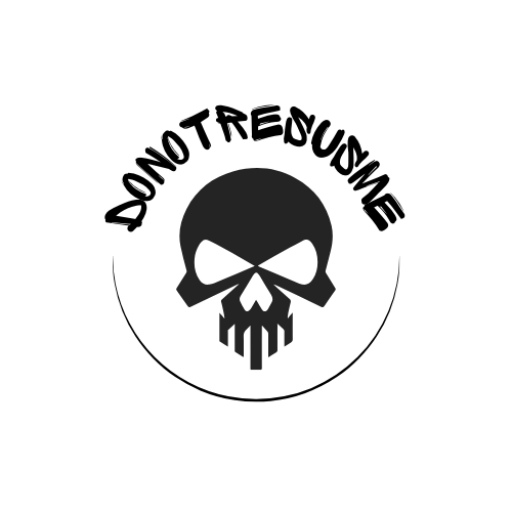Looking in the mirror, I see a complex mix that makes me who I am. What makes me unique and shapes my identity and thoughts? This question has intrigued many, including philosophers, psychologists, and us. I’m excited to dive into this topic.
The mix of nature and nurture, along with psychological and social factors, shapes our identity. Understanding this complex mix helps us grasp the human mind better.
We’re going to explore what makes us who we are and how we think. This journey will take us through cognitive processes and self-awareness. We’ll discover secrets that change how we see ourselves and the world.
The Liminal Realm: Where Self-Discovery Unfolds
We often find ourselves in the liminal realm, a mystical space where our conscious and subconscious minds meet. This space is perfect for deep self-discovery. It helps us unlock the secrets of who we are and how we think.
Venturing into the In-Between Spaces
The liminal realm is a place of change, where the known and unknown meet. By accepting its ambiguity, we can connect with the collective unconscious. This lets us see archetypes and insights we didn’t know were there. It helps us understand the hidden forces that shape our thoughts and actions.
Exploring the liminal realm might mean trying meditation, dreams, or psychedelic experiences. These can take us deeper into our minds. They show us the archetypes and patterns that guide our lives. By exploring these in-between spaces, we gain new insights into our identity and consciousness.
“The liminal realm is a place of transformation, where the old self is shed, and the new self emerges.” – Carl Jung
When we enter the liminal realm, we might feel many emotions, like discomfort or deep insights. It’s a journey that needs courage and a willingness to let go. But by facing the mystery of these spaces, we can discover our true selves and understand more about being human.
Unearthing the Fragments: Care Records and Lost Histories
I know how important it is to get your own care records. These documents are full of redactions and censorship. They help us understand our past and shape who we are. But getting these records is hard because of many barriers.
For those in foster care, finding our histories is a big deal. Care records can fill in the blanks of our past. They reveal the trauma and experiences that made us who we are today. But, bureaucratic barriers make it hard to get this information.
“The most essential piece of information a person can have is the story of their own life.”
Looking into care records and fragmented histories is tough, but it’s key to understanding ourselves. By finding these truths, we start to make sense of our past. But, the journey is hard, and bureaucratic barriers can feel too big to overcome.
When we try to find our lost histories, we show our strength and resilience. Facing these challenges, we can take back our stories and change our lives. This journey needs courage, persistence, and facing our past. But, the benefits of discovering ourselves are huge.
The Identity Crisis: A Crossroad Towards Self-Discovery
Exploring our identity can feel overwhelming, filled with inner struggles and the push-pull between what others expect and what we want. At this critical point, we face a crossroad. Here, the roles given to us meet our desire to create our own identity.
When we struggle with the gap between expected roles and our true goals, we’re forced to ask ourselves, “Who am I?” This crisis is both a hurdle and a chance for self-discovery. It’s a time to drop the masks and find the real us inside.
This crisis is a turning point, standing at the edge of change, unsure of what’s next but wanting to make our own choices. It’s a moment to let go of what others expect and to embrace our true potential.
“The greatest journey of all is the journey inward. Dare to explore the depths of your soul and uncover the essence of who you truly are.”
By facing the identity crisis bravely and with kindness towards ourselves, we open up to a deeper understanding of who we are. This crossroad leads to self-discovery, helping us drop old beliefs and accept our changing identities.
The future is unclear, but it offers the chance to remake ourselves, to live in line with our core values, and to build a life that truly reflects us. The identity crisis isn’t just a point we reach; it’s a journey. It calls us to leave behind societal expectations and embrace our unique dreams.
What Makes Us Who We Are and How We Think

Our identity and how we think are shaped by many things. From our genetic makeup to our social and environmental surroundings, our personality and self-awareness grow and change. I want to show you how these factors combine to shape who we are and our thoughts.
Our identity comes from a mix of nature and nurture. Our cognitive processes are influenced by many psychological factors. These include our emotions, how we make decisions, and how we see the world. Understanding these helps us see the core of our being and how we see reality.
| Factors Influencing Identity Formation | Factors Shaping Cognitive Processes |
|---|---|
| Genetic Predispositions | Emotional Intelligence |
| Social Influences | Decision-Making Patterns |
| Environmental Factors | Belief Systems |
| Personality Development | Perception and Interpretation |
Looking into identity formation and cognitive processes shows us how they shape our unique selves. These elements greatly affect our personality development and self-awareness. It’s a journey of self-discovery that reveals the complex psychological factors and belief systems that define us.
“The human mind is a complex tapestry, woven with threads of nature and nurture. To truly understand ourselves, we must unravel the intricate patterns that define our identity and cognition.”
Exploring our identity formation and cognitive processes inspires us to learn more about ourselves. Join me on this journey of self-discovery. We’ll uncover the secrets that make us who we are.
The Fluidity of Identity: Embracing Change
We are not stuck with just one identity. Our sense of self changes and grows with us. This change lets us drop old parts and add new ones, making life exciting and sometimes tough.
Our identity is like a tapestry, made up of many experiences and growth. As life changes, we let go of some parts and add new ones. This process is part of who we are becoming.
Navigating the Layers of Self
Our identity is complex, with different parts that blend together. When we look closer, we find new, deeper parts of ourselves. This can feel freeing and a bit scary, as we see how we’ve changed and grown.
“The only constant in life is change, and the ability to embrace that change is what defines our layers of self.”
By accepting our changing selves, we open up to endless possibilities. This journey helps us understand ourselves and how others see us. It leads us to accept and value who we are and who we’re becoming.
The Power of Purpose: A Guiding Compass

As we go through changes in our lives, finding purpose can be like a guiding compass. It helps us make choices that bring us meaning and fulfillment. This way, we can find our way through life’s changes.
Discovering a purpose that feels true to us is a big step. It gives us direction, keeps us motivated, and helps us stay true to ourselves. When we really understand who we are, we find strength and clear direction.
“The purpose of our lives is to be happy.” – Dalai Lama
Building a strong core purpose is ongoing. It’s a journey of learning and growing. As we move through life, our purpose might change. But it always guides us towards finding more meaning and fulfillment.
Using purpose as a guiding compass helps us face changes with hope and direction. It’s a key part of us. It keeps us grounded in what we value and leads us to a more meaningful and fulfilling life.
The 1% Better Everyday Approach
Changing who we are isn’t about a big change overnight. It’s more like growing a seed into a tree over time. The “1% Better Everyday” method shows how small, daily actions can help us grow. By making incremental changes every day, we can slowly change who we are.
Small Steps, Lasting Impact
Change can feel big, but it doesn’t have to be huge. It’s all about habit formation and consistency. Small, daily improvements can lead to big changes. This could be learning something new, eating healthier, or getting to know yourself better.
Imagine improving just 1% each day. Over time, these small changes add up. This is the magic of the “1% Better Everyday” approach. It’s about steady progress that makes a big difference.
- Identify one area of your life you’d like to improve by 1% each day.
- Develop a simple, actionable plan to make small, consistent changes.
- Celebrate each milestone, no matter how small, and stay motivated.
- Embrace the journey of identity shifts and trust the process of personal growth.
It’s not about being perfect. It’s about being consistent and resilient. Keep moving forward, one step at a time. Small steps can lead to a big change in your life.
“The journey of a thousand miles begins with a single step.” – Lao Tzu
Lessons from Addiction Recovery: A Parallel Journey
As I went through my own changes, I saw strong similarities with addiction recovery. Both are about breaking free from old habits and finding a new sense of self. The lessons from recovery have been key in my own change.
Support systems are key in both journeys. People in recovery lean on friends, mentors, and counselors. I’ve found great help in a community focused on growth and finding oneself. They offer a place to deal with identity changes, with understanding and advice.
Accepting a higher power or purpose is also vital. It could be a spiritual belief, a personal goal, or a commitment to making a difference. This guiding force helps me navigate through tough times. By living with a purpose, I’ve stayed true to who I want to be.


Pingback: Fake It Until You Make It Is The Secret to Success
Pingback: Friends Come and Go in Life